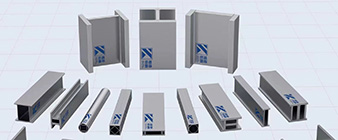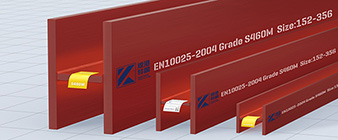Composition and microstructure:
– 2205 (UNS S32205) is a standard duplex stainless steel with a balanced microstructure of approximately 50% ferrite and 50% austenite.
– 1.4436 (AISI 316L) is a super austenitic stainless steel with a microstructure dominated by austenite but containing a small amount of ferrite.
Corrosion Resistance:
– Compared to 1.4436 super austenitic stainless steel, 2205 duplex stainless steel has excellent resistance to pitting, crevice and stress corrosion cracking, especially in chloride-containing environments.
– 2205’s higher chromium and molybdenum content contribute to its corrosion resistance.
Mechanical Properties:
– 2205 duplex stainless steel has higher tensile strength and yield strength than 1.4436 super austenitic stainless steel, typically in the range of 620-860 MPa and 450-650 MPa respectively.
– The dual-phase microstructure of 2205 provides a good balance of strength and ductility.
Structural Application:
– 2205 duplex stainless steel is widely used in structural applications requiring high strength, toughness and corrosion resistance, such as:
– Offshore platforms and subsea equipment
– Chemical Processing Plant
– Desalination and water treatment facilities
– Pulp and paper industry equipment
– 1.4436 super austenitic stainless steel is also used in structural applications, but its lower strength and corrosion resistance may limit its use in the most demanding environments.
Weldability:
– 2205 duplex stainless steel generally has good weldability, but welding parameters need to be carefully controlled to maintain the required ferrite-austenite balance and prevent the formation of harmful phases.
– 1.4436 super austenitic stainless steel is also considered weldable, with fewer concerns about microstructural changes during welding.
-
 2023-2-10 Laser self-fusion welding related technical features
2023-2-10 Laser self-fusion welding related technical features -
 2024-9-27 What are the typical applications of 318LN stainless steel structural beams and columns?
2024-9-27 What are the typical applications of 318LN stainless steel structural beams and columns? -
 2024-9-20 What are the advantages of S690 steel in construction engineering compared with conventional steel?
2024-9-20 What are the advantages of S690 steel in construction engineering compared with conventional steel? -
2024-9-27 What are the typical applications of 318LN (1.4462) duplex stainless steel structural profiles?
-
 2024-9-16 Introduction to the advantages of EN standard 1.4401 stainless steel
2024-9-16 Introduction to the advantages of EN standard 1.4401 stainless steel -
 2024-9-24 ASTM A514 Structural Steel Section
2024-9-24 ASTM A514 Structural Steel Section -
 2024-7-17 S460 high strength structural steel Sections
2024-7-17 S460 high strength structural steel Sections



